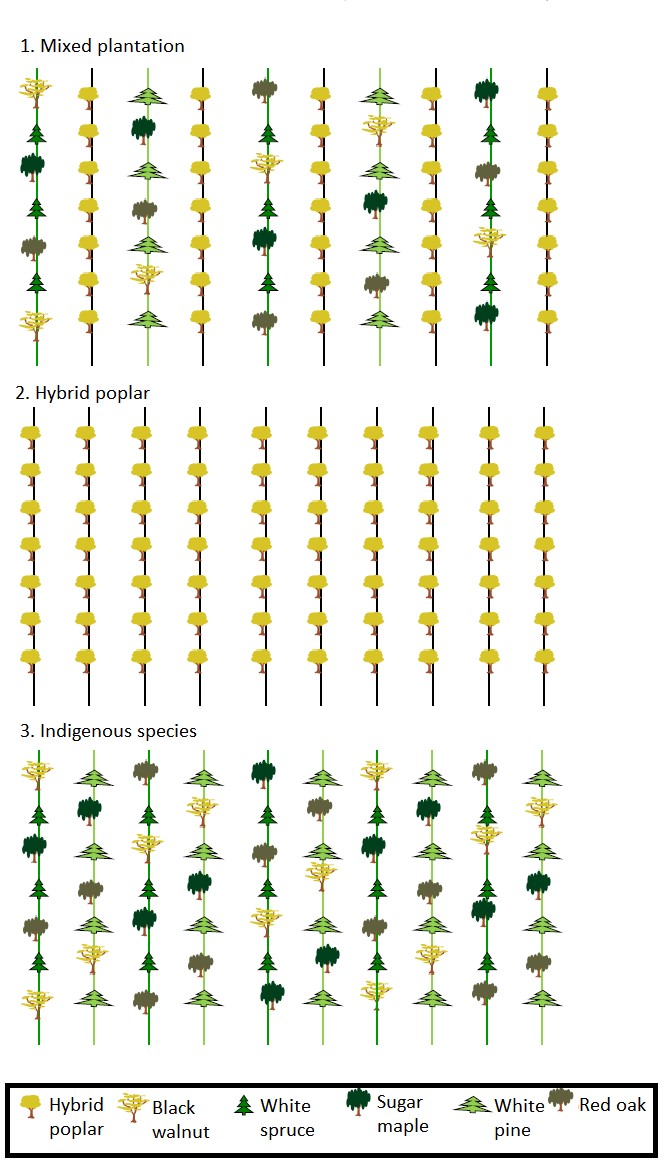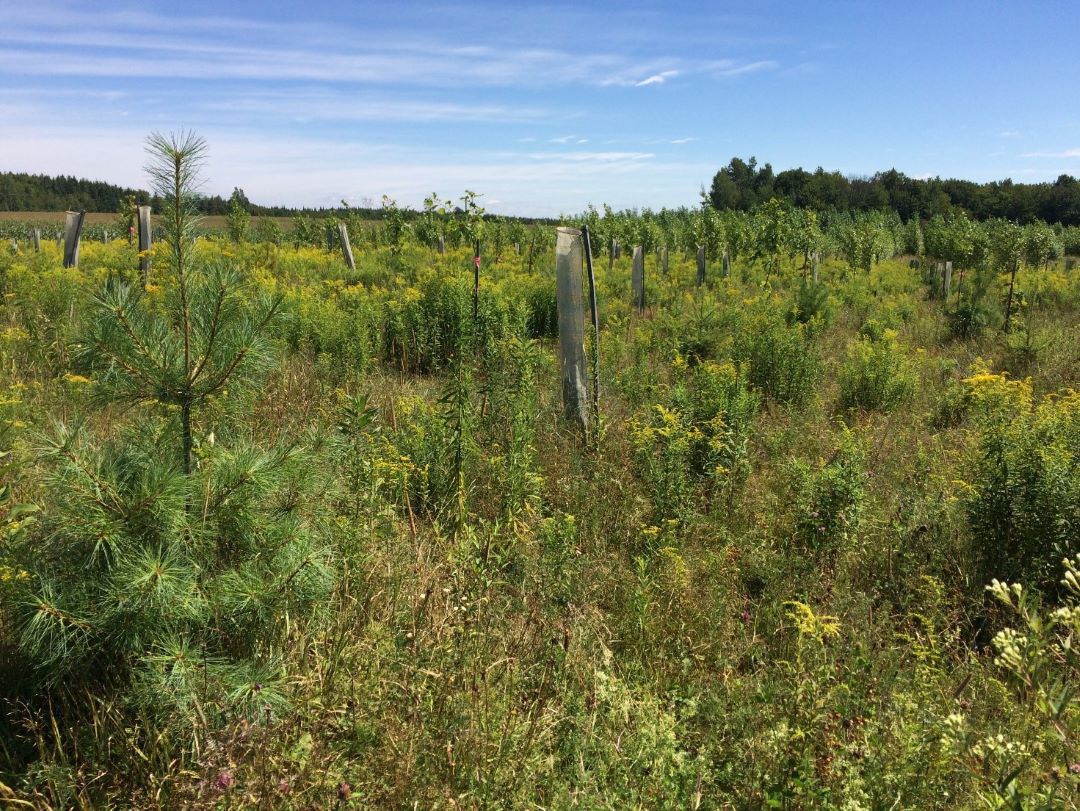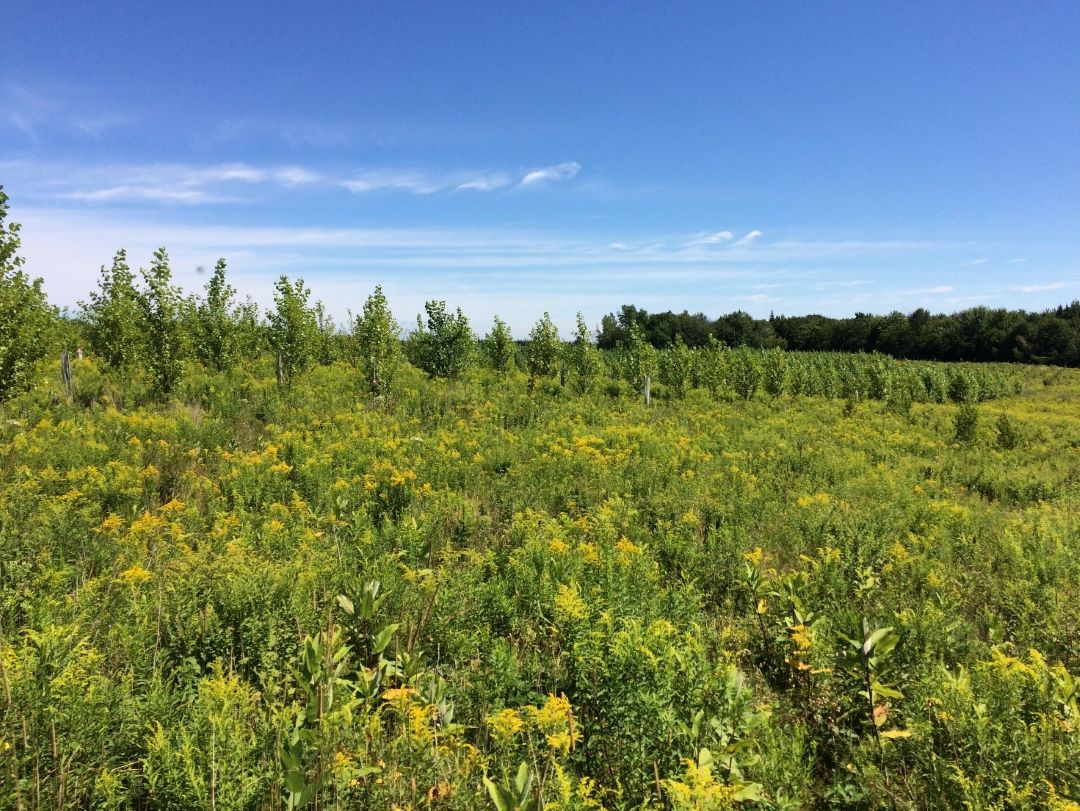Lyster
The trees were planted in 2013 on an abandoned agricultural land belonging to VEXCO, the industrial partner, in Lyster, a small town in the center of the Province of Quebec, eastern Canada. The planted species were hybrid poplar, black walnut, red oak, white spruce, sugar maple and white pine. This plantation has two principal goals. The first one is to measure the effect of diversity on many functions of the ecosystem such as productivity. The second is to showcase a mixed plantation on an industrial scale to test the workability for the forestry industry.
This trial is linked to the IDENT experiment.

Design
The plantation has three treatments which are repeated over four blocks. One treatment is a plantation of hybrid poplars. Another is a mixed plantation of black walnut, red oak, white spruce, sugar maple and white pine, all indigenous species. Finally, the last treatment is a mixt of the first two; one row of hybrid poplar and one row of the indigenous species mixed.

Site characteristics
| Lyster (Québec) | |
|---|---|
| Country | Canada |
| Biome | temperate |
| Latitude | 46.40 |
| Longitude | -71.66 |
| Former land use | agriculture |
| Altitude | 131 m |
| Design | row-wise regular, alternating hybrid poplar and indigenous species row; stem-wise regular within indigenous species rows |
| Plot shape | square |
| Plot size (m^2) | 5333 m² |
| Plant distance (m) | 3 |
| Number of trees planted | 5000 |
| Planting date | 2013 |
| Diversity variables | species richness |
| Size species pool | 6 |
| Species pool | (Populus deltoïdes x P. nigra) x P. maximocwizii Juglans nigra Quercus rubra Acer saccharum Picea glauca Pinus strobus |
| Contact person | Alain Paquette |
| paquette.alain@uqam.ca |
Research
Instead of planting one species and increasing the homogeneity of the land, this plantation has many species and is more heterogenous. Furthermore, the species chosen are based on complementarity among species in using resources such as light and nutrients. This could lead to a higher productivity of the plantation with the increase in the number of planted species. Mixed plantations seem to have some advantages over monoculture and could be use more in the forest industry.
Management
The plantation was established to showcase mixtures at industrial scales for the forest industry to evaluate challenges at the operational and organisational levels. Thus, those challenges could be identified from planting to harvest and tools could be developed for future mixed plantations.


Extra information
Contact info
For extra information you can send an e-mail to the contact person.